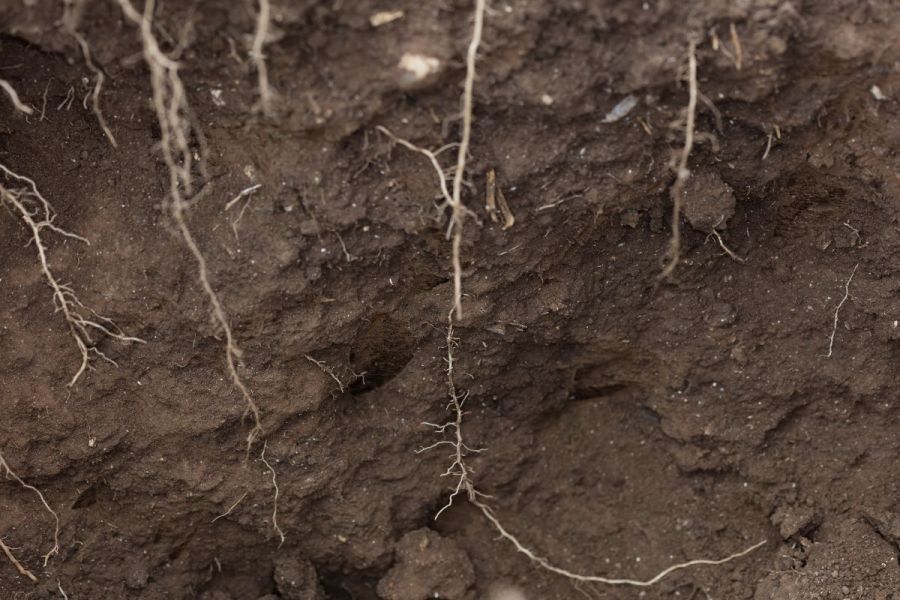Hutchinson’s Helix is a growing network of farms that exemplify research in its truest meaning – to investigate exhaustively. And it’s an ongoing process, whereby technology and data are evaluated in real life situations to support on-farm decision-making. CPM finds out why its open days offer something a little different.
“You have to work with the soil, not against it.”
By Lucy de la Pasture
Think of a helix and it’s probably DNA that first comes to mind. It’s fairly fitting then that the Helix network of farms is featuring the soil in a series of open days this summer since the information the soil carries dictates the way it functions and hence the development of the crop, much as DNA carries information in all organisms.
But with so much information about soils now available, it’s become a subject that can be overwhelming, especially when it comes to looking at how to improve it. One of the primary aims of the open days is to help growers cut through this ‘noise’, says Hutchinson’s development manager, Jennie Watson.
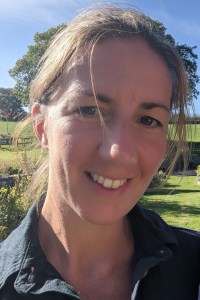
It can be difficult to know how to use all the information available about soils to make positive changes on the farm, says Jennie Watson.
“The fact that there’s so much talk about soils isn’t a negative, it’s brilliant that soil is being addressed. But there’s information coming from very different areas – be it academia, industry, or boots on the ground – and that can make it difficult to know how to use all this information in decision-making to make positive changes on the farm.
“The big question is how to interpret all of this info and work out which are the crucial bits of data, the key things to focus on to help make decisions that will create change. And that’s where Helix comes in,” she says.
The Helix network now extends to eight farms situated in different geographic locations and with different management aims. The farms provide a hotbed for farm-scale research which is underpinned by the Omnia digital platform, which helps process data overlayed with tacit knowledge to aid management decisions and business planning.
One of the first farms to benefit from Omnia’s soil mapping system, TerraMap, five years ago was Thomas Todd’s Northumberland farm. In spite of its situation in the Borders, the land at Barelees sits in a rain shadow. That, combined with soils that are mainly gravelly-based, sandy clay loams –formed from glacial deposits – which run to some lighter blowing sands means the farm is prone to drought.
Having trials on the farm is something Thomas has always been keen on. “I love experimenting and there’s always something to learn, even when things go wrong.”
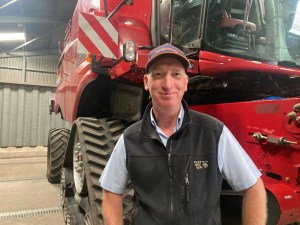
Thomas Todd says he aims to reduce use of nitrogen from the bag, both to reduce greenhouse gas emissions and lower input costs, so there’s a focus on nitrogen use efficiency trials on the farm.
And that’s the whole concept of Helix, adds his Hutchinson’s agronomist George Robson. “Some practices and technologies seem good in theory but turn out to be impractical on farm. We’re looking to see where, how and if new technologies fit in. It’s the classic ‘so what’.”
As water is often the yield limiting factor on the farm, it was to manage his light soils better that led Thomas down, first, the TerraMap path and more recently to become a Helix farm in 2022.
“Historically, we had a plough-based system with a power harrow combination, but it was making the ground too fine so the sand was blowing away even quicker. Now, we’ve moved to min-till and are very careful not to overwork the soil. We cover crop everything, so the soil is never bare in our oilseed rape, winter wheat, winter wheat, spring barley or vining peas rotation,” he says.
Thomas works closely with George when it comes to decision making. They have a real appetite to reduce use of nitrogen from the bag, both to reduce greenhouse gas emissions and lower input costs, so there’s a focus on nitrogen use efficiency trials on the farm.
“We’re looking at alternatives to synthetic nitrogen,” says Thomas. “Those include Utrisha , which contains a nitrogen-fixing bacteria and methylated urea to replace some of our N and help reduce the farm’s carbon footprint.
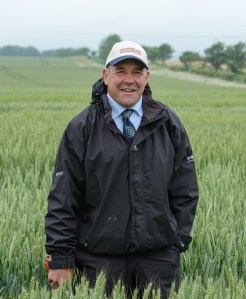
The whole concept of Helix is to try out practices and technologies to find out what’s practical and what’s not on the farm, with some of the biggest learnings when things don’t work as expected, says George Robson.
“We have to decrease our reliance on bagged N and find other sources. There isn’t any straw for muck deals to be made locally and it’s probably too risky anyway, so all of our straw is chopped and incorporated.”
Companion cropping is another avenue Thomas would like to explore to help reduce his N use. “There’s an interesting balancing act – when does a companion crop become a weed?” he says.
George highlights that Omnia has given them the ability to drill with variable seed rates using seedbed condition maps and to apply variable rate fertiliser across fields. “Some of the fields are coming round in the rotation again and what we’re seeing is better resilience. We’re not improving the good areas within fields, but we have brought up the performance of the more challenging areas – increasing the potential across the field.”
Thomas agrees that fine-tuning inputs is translating into an increase in yield but that’s not all he’s noticed since his focus has moved to the soil. Even though last season was challenging for a light soil, with drought conditions and intense summer heatwaves, crops didn’t appear to suffer. “We’re not as drought prone as we were 10-15 years ago and in a wet month, we don’t have problems with water lying anymore and the soil doesn’t cap so easily.”
Understanding the soil better has enabled them to manage it better and raise soil organic matter levels from around 2% to just over 4%, adds George. “We’ve developed a sponge in the soil, so it supplies and absorbs moisture. It’s become much more self-regulating.”
The experience backs up Jennie’s assertion that interpretation of soil analyses is of paramount importance.
“Interpreting what data means and the impact it has for the farm is something Hutchinsons’ agronomists are trained to do and is rooted in practicality. While the aim may be to make the soil more resilient, there are some aspects that can be changed and others that can’t. You have to work with the soil, not against it.”
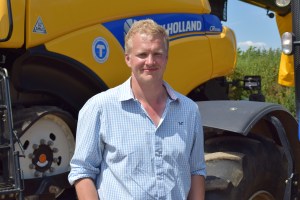
With some sage advice from Hutchinsons, half the Helix farm has switched into CS, employing a rotation of winter cover crop, low input cereal (spring oats), followed by winter wheat, explains George Stephenson.
Recognising this, interpretation of soil will be the second of the key themes running across the Helix open days this summer. George Stephenson’s farm near Aynho, between Bicester and Banbury, became part of the Helix network three years ago and the interpretation of both standard TerraMapping and the Gold test has resulted in a change of practices and cultivation equipment.
When Hutchinsons’ agronomist Toby Page started working with George, it really was a blank sheet of paper as far as soil testing was concerned, so baselining the soil was something he was keen to address.
George was already planning a move away from the heavy cultivations the farm had been employing towards a minimal cultivation/direct drilling tillage system, but the baselining gave him the confidence that it was the right thing to do for his soils.
Typical of the very light brashy soils in the area, the soil pH is high at around 8 and the Gold test revealed that most of the phosphate in the soil was locked up as a result.
“Soil pH is a driver of many things and we’ve looked at how we’re supplying nutrients,” says Toby. “The farm has been taking a phosphate holiday but when we do start to apply P again then it won’t be as TSP, which was farm practice, but will be either be as DAP or preferably as an organic form, such as sewage sludge or chicken manure.”
It’s something the farm will be looking at more closely in Helix trials, with P in various forms applied to put some science behind finding the best option. Toby says they’ve also switched to PotashPluS, as it provides not just K but also Mg and S.
Although the farm has reduced tillage, the Gold test indicated that slumping was likely to be an issue. “We now use a low disturbance subsoiler so that we can rotationally lift soils but without mixing it,” explains George.
Before cutting back on P, variable rate applications were made for P and K, but the TerraMap data showed an unusual evenness in soil structure across the fields which meant variable rate seeding wasn’t really needed. That meant George didn’t have to make unnecessary changes to his drill.
All in all, the change in tillage and introduction of cover crops has resulted in a massive decrease in blackgrass, with no requirement for spring sulfonylureas anymore, adds Toby, as well as a reduction in the amount of pre-emergence herbicides applied in autumn.
The light soils are drought prone and often nitrogen uptake is limited as the ground dries out in June and July. Another area of interest for George and Toby is switching a proportion of nitrogen into late foliar feeds and a number of new technologies are being investigated on the farm.
But it’s not just the TerraMapping capabilities with Omnia that George has found valuable, using that data for business planning has enabled him to identify areas to put into Countryside Stewardship (CS) schemes. With some sage advice from Hutchinsons, half the Helix farm has switched into CS, employing a rotation of winter cover crop, low input cereal (spring oats), followed by winter wheat.
“It means we receive two quite decent CS payments which will go a long way towards replacing the Basic Farm Payment. Although I knew where the worst areas are on the farm, Omnia has provided reassurance and helped find the right balance to get CS working alongside the arable.”
Jennie believes there will be something for everyone who comes to learn what’s going on within the Helix network this summer. “By seeing how these farms are linking together measurements and decision-making, farmers will be able to relate these concepts and understanding to their own farms – none of which will be the same, so it’s not a blueprint, but is a valuable process to identify the decisions that will make a difference.”
Research briefing
To help growers get the best out of technology used in the field there’s investment in R&D at every level, from the lab to extensive field trials. CPM Research Briefings provide not only the findings of recent research, but also an insight into the technology, to ensure a full understanding of how to optimise use in the field.
CPM would like to thank Hutchinsons for sponsoring this Research Briefing and for providing privileged access to staff and material used to help bring it together.
This article was taken from the latest issue of CPM. Read the article in full here.
For more articles like this, subscribe here.
Sign up for Crop Production Magazine’s FREE e-newsletter here.

